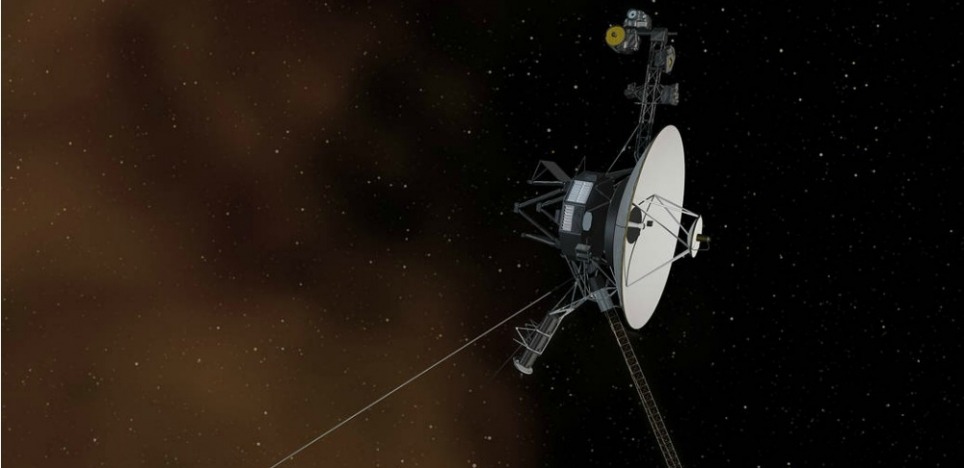The Voyager 1 spacecraft — launched on September 5, 1977 — has journeyed into interstellar space an incomprehensible 13.3 billion miles from Earth, as of this writing in 2018. Voyager 2, launched on August 20, 1977, is a "mere" 10 billion miles away from us. You can view their mission status on this NASA webpage as they continue to travel still farther. Even the rate of their rapidly increasing miles, which you can view on the screen, dazzles the mind.
The two Voyagers explored all four of the giant outer planets of our solar system, 48 of their moons, and their unusual system of rings and magnetic fields. Among their findings:
- the first active volcano beyond Earth on Jupiter's moon Io;
- the spoke-like structures between Saturn's rings;
- the great Dark Spot;
- a giant storm on Neptune;
- active geyser-like eruptions on Neptune's moon Triton.
Voyager 1 is now the farthest human-made object from Earth.
Jamie Rankin works on the Voyager project as a Caltech graduate student researching how the intensities of galactic cosmic rays change through their interactions with the heliosphere. She shares, "These spacecraft are more than a decade older than me, and yet are still on the cutting edge, pushing the boundaries of humankind’s understanding and ability to explore space. Every day as a graduate student here is like living in a legacy of discovery."
To Name This Day . . .
 DVD
DVD
Watch the top-drawer PBS documentary on the astonishing mission of the Voyager spacecraft and its partner. In the documentary, the scientists, engineers, and team members who envisioned the Voyager mission recall their reactions to Voyager's pictures of what had never been seen before by human eyes. "Wow," "Ahhh," "Holy Moly," along with their wide-eyed expressions, convey their abundant enthusiasm. We find ourselves, to use Diane Ackerman's phrase, "kneedeep in the cosmic overwhelm."
 Spiritual Practice
Spiritual Practice
For a long time, America and other earth-based nations have been gripped by fears and fascination about being destroyed or taken over by aliens from other worlds. In an altogether different spirit, the remarkable journey of Voyager 1 and her companion Voyager 2 carry a time capsule message from Earth to possible civilizations beyond our ken.
The spiritual message sent into the universe from the U.S, President Jimmy Carter contains positive and inspirational words which are hopeful, kind, and communal. Here they are:
"We cast this message into the cosmos ... Of the 200 billion stars in the Milky Way galaxy, some — perhaps many — may have inhabited planets and space faring civilizations. If one such civilization intercepts Voyager and can understand these recorded contents, here is our message: This is a present from a small distant world, a token of our sounds, our science, our images, our music, our thoughts, and our feelings. We are attempting to survive our time so we may live into yours. We hope some day, having solved the problems we face, to join a community of galactic civilizations. This record represents our hope and our determination and our goodwill in a vast and awesome universe."
What words would you like to send out into interstellar space if you had the opportunity to communicate with civilizations beyond our galaxy?
Image (artist's concept) credit: NASA/JPL-Caltech
